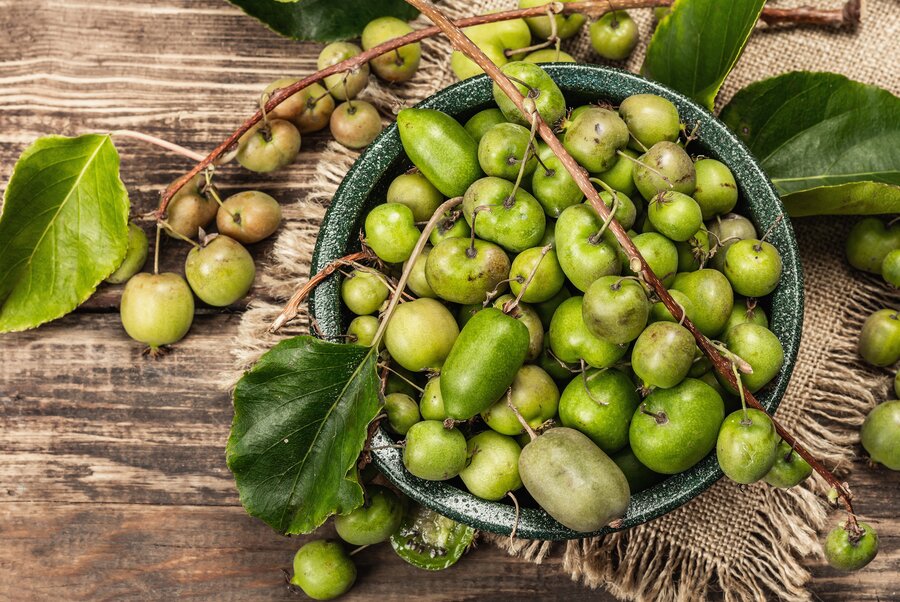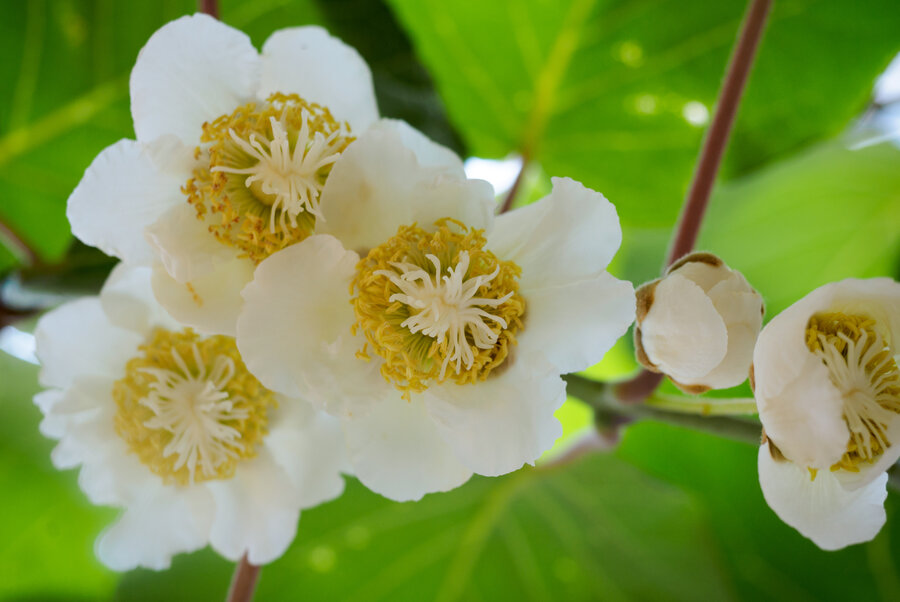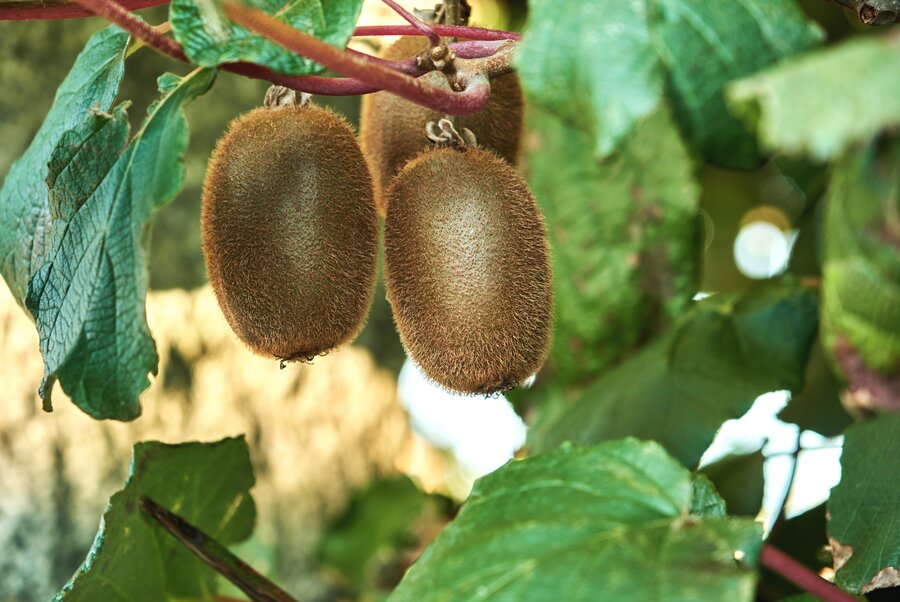Written by Spirekassen 27 Feb 2024 14:13
Cultivation of Kiwi in the Greenhouse
With the new climate norm, the climate has generally become milder. At Spirekassen, we make the most of it by cultivating species that were previously difficult to succeed in our climate. The greenhouse gives us an extended summer season in the outer months. March is mild in the greenhouse, as are September and October. In 2023, we planted a kiwi plant in a warm spot in our old orangery.
Traditionally, greenhouses across the country are planted with grapevines, understandable as homegrown grapes are delightful with a unique sweetness not found in store-bought grapes. However, consider trying something different and somewhat unusual – growing Kiwi in the greenhouse.
Kiwi belongs to the family Actinidiaceae, also simply called the "kiwi family." It is a deciduous climbing plant, and botanically, the kiwi fruit is a berry, not a fruit as many might think. The flesh is juicy green or yellow green. The seeds are edible and black, ranging from 400 to over 1000 seeds in a fruit. The flower is yellowish-white and hangs on a small stem. The plant blooms in June and has mature fruits in October. Originally, Kiwi is what is called a "dioecious" plant, meaning there are both female and male plants in nature. To get fruits, you needed both a female and a male plant for pollination. Today, through breeding, there are self-pollinating varieties, requiring only one plant in the greenhouse.
Kiwi From the Supermarket
Common supermarket Kiwi, the Actinidia chinensis species, is native to China and first arrived in Europe in 1953. New Zealand is the country that has truly produced and marketed Kiwi. The fruit is named after New Zealand's national bird.
Choose the Right Seeds
Choose the right seeds for success in the greenhouse in Northern Europe. Actinidia arguta, known as "Hardy Kiwi," "Mini-Kiwi," or "Gooseberry Kiwi," for example, the variety "Issai," is known to thrive in cooler climates. The seed varieties Actinidia deliciosa grows well in the greenhouse or conservatory. While Kiwi can be grown outdoors in England, it is rare for the plant to bear fruit. Remember, Kiwi is native to primarily subtropical climates, and this warm climate needs to be replicated for successful cultivation in England.
In early summer, Kiwi blooms with white/orange-yellow flowers. The fruits are ripe in September/October. They are smaller than those in supermarkets, about 3 to 5 cm. Varieties like "Boskoop" and "Jenny" are self-pollinating and suitable for the greenhouse.
The Greenhouse is the Ideal Place
Choose the warmest spot in the greenhouse for your kiwi plant. Consider not only the warmest spot in summer but also in winter, as Kiwi is sensitive to frost.
Kiwi grows best in well-drained soil in full sun, but partial shade is also fine. Kiwi prefers soil with a pH between 6.0 and 6.5, a standard pH for the classic soil available at nurseries.
The Growth Is Massive, and the Fruits.
As mentioned, Kiwi has a sprawling growth, and growth in spring and summer is quite vigorous. If the shoots are not pruned and controlled, the vines can become meters long. Ensure that Kiwi plants receive sufficient water, especially during dry periods. However, avoid flooding, as Kiwi plant roots can be sensitive to stagnant water.
Kiwi is a good alternative to a grapevine in the greenhouse. However, your greenhouse should be 10 m2 or larger to accommodate a kiwi plant. After a couple of years, the kiwi plant will have spread over the entire greenhouse roof if not pruned. Like the grapevine, Kiwi has a sprawling growth and likes to climb. At Spirekassen, our Kiwi grows against a warm end wall in our old orangery, where there is a trellis. Therefore, consider support options for the plant.
The first fruits come approximately 3 years after planting, depending on the age of the purchased plant. Plants are available in various sizes in different places.
Beware of Frost Periods
Frost is one of the biggest challenges in cultivating Kiwi in the North. Consider covering the plant in winter with fleece or other protective material to minimize frost damage.
Fun facts about Kiwi
The vitamin C content in Kiwi is high, approximately 98 milligrams per 100 grams, almost double that of oranges. There are other exciting substances in Kiwi, including serotonin. Serotonin is a neurotransmitter, a chemical that transfers a signal from one nerve cell to another. Serotonin plays a significant role in our sense of well-being and happiness. Eating Kiwi can actually make you feel happy.





